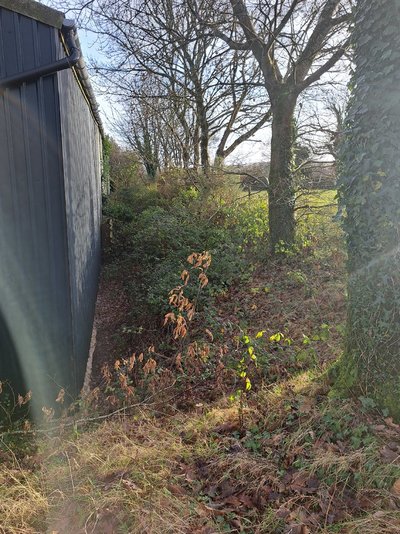You are using an out of date browser. It may not display this or other websites correctly.
You should upgrade or use an alternative browser.
You should upgrade or use an alternative browser.
Water coming up through concrete slab
- Thread starter reb78
- Start date
Gareth J
Member
- Messages
- 3,668
- Location
- North Cornwall
Depending on the structure beneath, water can come up in unexpected places. Cornwall has plenty of "geology" about so I wouldn't guarantee anything.
But having said that, a big part of the problem, given recent weather, is likely to be runoff collecting at the back of the slab with nowhere adequate to go. See if you can get that back gulley running away, either through or around the building
But having said that, a big part of the problem, given recent weather, is likely to be runoff collecting at the back of the slab with nowhere adequate to go. See if you can get that back gulley running away, either through or around the building
Screwdriver
Member
- Messages
- 10,719
Dunno but that looks like good easy access for a mini digger! Much easier than digging up all that concrete.
Gareth J
Member
- Messages
- 3,668
- Location
- North Cornwall
If diggering, ask someone who hires them with drivers to call out, look at the job and recommend. Looks like ~8ton would sit in the field and with a ditch cleaning bucket, reach the foot of the shed to clear a ditch that you can run to one side. Get too small a machine and it'll be trying to operate on the slope and won't have the reach to do anything sensible with the waste. But a contractor would be able to recommend better than me.
gaz1
Member
- Messages
- 20,088
- Location
- westyorkshire
ive noticed your drain at the front
can you shove a stick down into it and record its deepness
clay tops and gulleys are deeper than there plastic eqivelent this is where id aim for as you can do a direct to drain french drain
id also take the digger through the side wall and clear the side in doing this you have a few advantages here
you can create a deep land gully and fill it with pebbles any water will aim for this point
land drains can be 1 metre square and deep but you can lengthen them rather well 2ft wide or 16" by the length of the stables would be a good collectiion point of land water
can you shove a stick down into it and record its deepness
clay tops and gulleys are deeper than there plastic eqivelent this is where id aim for as you can do a direct to drain french drain
id also take the digger through the side wall and clear the side in doing this you have a few advantages here
you can create a deep land gully and fill it with pebbles any water will aim for this point
land drains can be 1 metre square and deep but you can lengthen them rather well 2ft wide or 16" by the length of the stables would be a good collectiion point of land water
clean out your gutters first.... if they're overflowing they'll be dumping water right at the wall (mostly a problem round the back)
and check your drains are all flowing away ok
whats the ground like around the place, is it all really soggy? is it all on a hill or are your buildings at the bottom of the hill?
dig a hole somewhere lower than the buildings, see if it fills up / how quick it fills up
lets you know if the whole area is soggy or if it's just water passing underneath and popping up on it's way down hill
my parents house had a cellar with a sump in it, sump was just a square cut out of the concrete about 18inch square, had concrete in the bottom apart from a small rectangle at the front which was just mud.... when it rained heavy the hole would fill up and a pump pumped the water away.... cellar was always bone dry, worked really well
and check your drains are all flowing away ok
whats the ground like around the place, is it all really soggy? is it all on a hill or are your buildings at the bottom of the hill?
dig a hole somewhere lower than the buildings, see if it fills up / how quick it fills up
lets you know if the whole area is soggy or if it's just water passing underneath and popping up on it's way down hill
my parents house had a cellar with a sump in it, sump was just a square cut out of the concrete about 18inch square, had concrete in the bottom apart from a small rectangle at the front which was just mud.... when it rained heavy the hole would fill up and a pump pumped the water away.... cellar was always bone dry, worked really well






